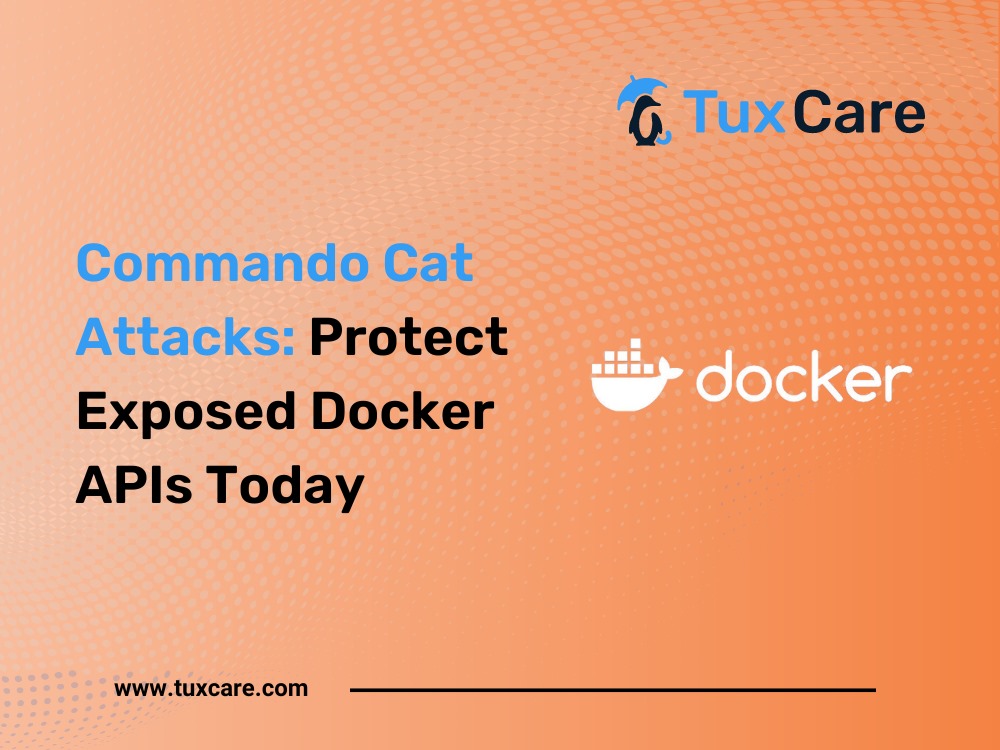Commando Cat Attacks: Protect Exposed Docker APIs Today
Exposed Docker API risks pose significant security threats to organizations utilizing container technology. In recent months, a sophisticated crypto jacking operation dubbed Commando Cat has emerged as a potent threat to Docker API security accessible over the internet. This campaign, as detailed by Cado security researchers Nate Bill and Matt Muir, signifies a concerning trend in cyber threats targeting vulnerable Docker hosts.
Understanding Commando Cat
Commando Cat utilizes Docker as a gateway to infiltrate systems, deploying a benign container created through the Commando project. Once inside, the attacker orchestrates a series of malicious actions, including escaping the container’s confines to run multiple payloads on the Docker host. Docker API breach prevention requires proactive security measures and vigilant monitoring to safeguard against potential vulnerabilities.
Timeline of Activity
Cat-themed cyber attacks add a unique twist to the ever-evolving landscape of cybersecurity threats. Believed to have been operational since the beginning of 2024, Commando Cat follows closely on the heels of similar campaigns. In January of the same year, another cluster of malicious activity aimed at exploiting vulnerable Docker hosts came to light, highlighting the growing prevalence of such threats.
Modus Operandi
The modus operandi of Commando Cat involves leveraging Docker to initiate access and deliver a slew of interconnected payloads from a server controlled by the attacker. These payloads encompass a range of nefarious activities, from establishing persistence and backdooring the host to exfiltrating cloud service provider credentials and launching cryptocurrency mining operations.
Escaping Confinement
One notable aspect of Commando Cat’s strategy is its ability to escape the constraints of the container using the chroot command, effectively extending its reach within the host system. This maneuver allows the attacker to execute further commands and escalate privileges, amplifying the impact of the Commando Cat cyber attack.
Identifying Containerization Vulnerabilities
Upon gaining a foothold in susceptible Docker instances, Commando Cat conducts thorough reconnaissance, checking for specific active services such as “ys-kernel-debugger,” “gsc,” “c3pool_miner,” and “dockercache.” This meticulous approach ensures that the attack proceeds only under optimal conditions, maximizing its chances of success.
Exploiting Weaknesses
The subsequent stages of the attack involve deploying additional payloads from a command-and-control server, including shell scripts capable of creating backdoors, adding SSH keys, and establishing rogue user accounts with elevated privileges. These actions effectively pave the way for prolonged access and control over the compromised system.
Evasion Tactics
Cybersecurity for Docker containers is essential in today’s digital landscape. Commando Cat employs various evasion tactics to thwart detection and forensic analysis. By utilizing unconventional file storage locations such as /dev/shm instead of /tmp, the malware minimizes its footprint on disk, making it more challenging to trace and mitigate.
Cyber Threats To Containerized Environments
A key objective of Commando Cat is the deployment of cryptocurrency mining software, such as XMRig, to exploit the computational resources of infected machines for financial gain. This payload is executed after eliminating competing mining processes, ensuring maximum efficiency in resource utilization.
Attribution Challenges
While the exact origins of Commando Cat remain elusive, certain indicators suggest potential ties to known cryptojacking groups like TeamTNT. However, conclusive attribution proves challenging due to the nature of cyber operations and the prevalence of copycat tactics. Hence, securing Docker containers is crucial for maintaining a robust cybersecurity posture in modern IT environments.
Conclusion
In conclusion, Commando Cat represents a multifaceted threat, combining elements of credential theft, backdoor access, and cryptocurrency mining into a single, versatile package. As such campaigns continue to evolve, API security best practices, such as patching vulnerable systems and enhancing security protocols, are paramount to mitigating their impact.
The sources for this piece include articles in The Hacker News and DarkReading.



 Documentation
Documentation Login
Login




